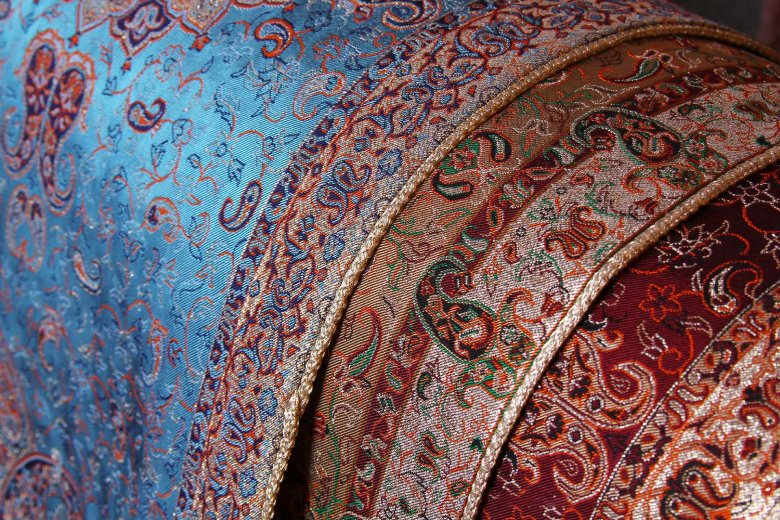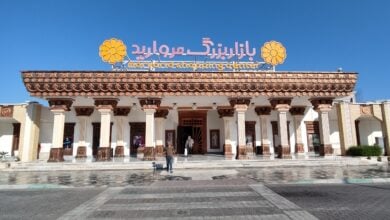Shop Traditional at the Bazaars of Yazd
The Best Places to Buy Some Yazd's Souvenirs

When considering shopping traditionally at a Bazaar, we often imagine going to intricate spaces with arched ceilings and numerous shops selling handicrafts and local goods. Yazd‘s history dates back to the early millennium.
Despite various social upheavals and invasions, its strategic location as an economic and cultural crossroads along the Silk Road contributed to the construction of public buildings such as bazaars and caravanserais along trade routes. Fortunately, Yazd is among the cities in Iran specifically famous for their traditional bazaars. This article will explore Bazaars of Yazd, which are considered one of Iran’s oldest.
Contents
The Characteristics of Bazaars of Yazd
In Iran, bazaar architectural features vary according to the climate of different cities, reflecting regional differences. In the hotter areas of the country, such as Yazd, bazaar architecture incorporates high arches and domes to shield against intense sunlight and heat during the summer while also moderating the interior temperature during colder months.
Additionally, more giant window openings in the roofs allow natural light to enter and, combined with the tall domes, enhance airflow and contribute to a more relaxed environment within the bazaar.
1. The Yazd’s Khan Bazaar

This site dates back to the Qajar era, about two centuries ago. It is made of adobe, clay, plaster, and brick, so it has a warm and pleasant atmosphere during the winter. Fortunately, its central structure, including its bricks and stalls, has remained intact.
Compared to other bazaars of Yazd, Khan Bazaar is considered the longest and most authentic one. The historic Khan Bazaar, 274 meters long and ranging from 4 to 6 meters in height, is the longest in Yazd. This place comprises two sections: northern-southern and eastern-western. The northern-southern section is 78 meters long and features 53 shops. The eastern-western section is 180 meters long and contains 100 stalls.
Khan bazaar is highly valued among the people of Yazd due to its various traditional goods and products. Authentic trades such as blacksmithing, goldsmithing, and coppersmithing are present in this bazaar. Additionally, this bazaar is not only a place for shopping but also has a beautiful conventional atmosphere, offering incredible tranquility while strolling through it. Each bazaar section is associated with a particular craft and has unique architecture. Also, this bazaar features two wooden entrance doors and a ceiling with regular arches that resemble a spiral snail.
2. The Qeysarieh Bazaar

The Qeysarieh Bazaar in Yazd is another historical construction dating back to the 12th century. It is known for its unique architecture and various colored fabrics, particularly Termeh. The Qeysarieh Bazaar features two wooden doors and is recognized for its elegant design and impressive play of light. The height of the arches in the bazaar’s lanes was significant for trade. For instance, the ceilings in the Qeysariyeh, which housed luxury items, were higher than those in other lanes.
The Qeysariyeh bazaar in Yazd has a narrow side row with corridors and a Timche (a small dome) between Khan Square and Khan School. Like other traditional bazaars, this one features two entrances—wooden doors at either end. Architecturally, the Qeysariyeh Bazaar has a more elegant and organized design compared to other sections of the Khan Complex. The abundance of colorful and beautiful fabrics in Yazd gives visitors the experience of strolling through rooms adorned with luxurious curtains and textiles.
3. The Coppersmith Bazaar

The Coppersmith Bazaar is another vibrant site that has been advanced since the 15th century. This bazaar showcases various copper dishes and utensils and is considered one of Yazd’s most attractive bazaars. Copper craftsmanship has been prominent in Iran since ancient times, and until recently, many everyday utensils and items used by Iranians were made from copper.
As you wander through the bazaar, you can hear the sound of master coppersmiths at work skillfully and lovingly transforming pieces of metal into beautiful, engraved vessels. Visitors can spend hours admiring the diverse array of copper utensils, handicrafts, and agricultural tools, all set against the backdrop of dome-shaped ceilings and brick walls, immersing themselves in the rich history of this city. The bazaar is in the heart of Yazd’s historic district and leads to Khan Square at its end.
Souvenir Shopping

Yazd is known for its luxurious fabrics and exquisite handkerchiefs, which make ideal souvenirs. Imagine visiting Bazaars of Yazd to find the best products—a delightful experience and a visual feast. While exploring this magnificent historical site, you can purchase its unique handicrafts and traditional items, such as Termeh, ceramics, copper craftsmanship, and Zari weaving.
Termeh is a captivating fabric known since the 16th century for its vibrant colors, quality of its textile, and intricate patterns. It is still traditionally produced on a four-harness loom and showcases Iranian artistry. Pottery and ceramics reflect the rich mystical background and impressive craftsmanship. They use local clay from Meybod to create pieces that narrate rich cultural legacies. Their intricate shapes and glazes highlight both functionality and artistic value.
Yazd and Kerman are also renowned for their beautiful copper crafts. Visitors can see artisans at work in the copper bazaar, creating stunning pots, plates, and dishes in different sizes and shapes. Zari weaving combines silk with gold or silver threads, resulting in elegant fabrics that enhance formal dresses, tablecloths, and cushions. These fabrics add elegance and shine to any occasion, improving the overall aesthetic of the environment.
IRAN GROUP TOURS
Join our Iran tours, connecting you with like-minded travelers and streamlining the organization process.
Yazd in a Nutshell
With a history stretching back to the early millennium, Yazd is famous for its traditional bazaars that feature unique architectural designs suited to the hot climate. Khan Bazaar is the longest bazaar in the Qajar era, and it is known for its warm atmosphere and traditional crafts like blacksmithing.
Qeysarieh Bazaar, dating from the 12th century, stands out for its elegant architecture and colorful Termeh fabrics, featuring higher ceilings for luxury items. Coppersmith Bazaar highlights exquisite copper craftsmanship dating back to the 15th century, showcasing the artistry of local coppersmiths. Yazd is also celebrated for its luxurious fabrics and handicrafts, making it an excellent spot for souvenirs such as Termeh, ceramics, and copper items.
FAQs
What can I buy in Yaz as a souvenir?
You can purchase its unique handicrafts and traditional items, such as Termeh, ceramics, copper craftsmanship, and Zari weaving.
What is Qeysarieh Bazaar famous for?
Qeysarieh Bazaar is known for its unique architecture and various colored fabrics, particularly Termeh.
What is Khan Bazaar known for?
Khan bazaar is highly valued among the people of Yazd due to its various traditional goods and products. Khan Bazaar is considered the longest and most authentic one.










